Punto Antico
By Adeline Panamaroff
Adeline, a freelance writer/proofreader, located in Edmonton, Alberta can be contacted at www.adelinepanamaroff.com for writing and marketing requests.
Punto Antico designs by Kathryn Drummond
Stitched by Paula B. as part of an online class
HISTORY: Punto Antico is a centuries-old monochrome, counted and pulled thread, embroidery technique that had its beginnings in Sicily. Meaning ‘antique stitch' in Italian, Punto Antico has also been called ‘Punto Toscano’, ‘Punto Reale’, and ‘Punto Riccio’, depending on the region and time frame in which it is referenced. Punto Antico has been the common name for this embellishment style since the early 1900s.
Worked on fine linens of even count threads on both the weft and warp, examples of this delicate stitching method that date from the mid-15th century, have been preserved in museums and private collections. The designs use geometric shapes and are thought to have been inspired by Arabic aseptic elements, since Sicily was politically and socially dominated by Arabic culture for a long period of its history. Older examples of Punto Antico have large portions of the cloth covered with stitches and small areas of open work, with little of the backing cloth showing through the embroidery, while more modern examples have smaller design elements, larger areas of open work and much more of the backing material can be seen between the stitched spaces.
Much of the early pieces of Punto Antico were manufactured for church use, as altar, Bible, and cushion covers. Later on, the technique was used in domestic settings, to adorn table cloths, bed sheets, curtains, pillows, and wall hangings.
The patterns used in Punto Antico have been ever evolving. They have been passed down through samplers, which documented the different stitches used, and how to form them, as well through wood block printed pamphlets, some of which still exist, the earliest dating from 1525 C.E. Stitchers would employ the local talents of painters to draw up diagrams of their stitched work and then had the woodblock prints created by printers.
By the early 1900s, a few books had been published, mostly in Italian, that contained patterns and instructions. Eventually, these books were translated, and new volumes in English were created to help disperse the knowledge of Punto Antico to a global audience.
An embroidery school in Borgo San Lorenzo was established in the 1970s which taught Punto Antico, first to local children, and in later years to older women. These older students proved to be a boon for the school as they now brought their friends and daughters to learn the craft, which increased the size and duration of classes.
Today Punto Antico is instructed and practiced through local needlecraft guilds and through special interest workshops.
TECHNIQUE: There are many different stitches employed in Punto Antico. A few of the mainstays are square stitch, curl stitch, peahole hemstitch, mist stitch, web stitch, satin stitch, button hole, and reverse button hole, to name a few. Stitches like curl stitch have several different stitch steps within it that have to be completed to get the final effect.
Traditionally embroidered with white thread on white fabric, Punto Antico is typically a monochromatic needlecraft. The open work, created by both pulled thread, for smaller areas, and cut worked spaces, for larger design elements, is similar to hardanger needlecraft. The distinctive technique for Punto Antico that differentiates it from hardanger is that when a square of diamond shaped section of the backing fabric is ready to be removed for the open work to begin, the fabric is cut through on a diagonal, from corner to corner, creating an x. This material is then folded to the back of the piece and the edge of the opening is stitched over, to keep it from fraying apart. The excess material is then cut away from the back side of the embroidered piece. Smaller areas of open work, such as small circles are simply punched through with an awl and then stitched around to reinforce the opening.
INNOVATION: Today Punto Antico has been released from the confines of monochrome colour schemes. The modern embroiderer takes creative licence with the colour of the backing fabric, while using white or other colored threads. This allows the stitches to be more easily admired when in contrast to the material it is worked on.
Punto Antico today has been applied to pin cushions, small Christmas tree ornaments, and table runners, in addition to the more traditional pillows, curtains and tablecloths.
This Italian embroidery method is still alive and well, with new designs being created and learned through individual practitioners and in needlecraft guilds and specialty workshops.
REFERENCES AND FURTHER READING:
Piecework Magazine - Punto Antico: Classic Italian Embroidery by Jeanine Robertson
La Bella Donna Blog - Punto Antico: Drawn Thread Work by Fleur-de-Gigi
Note: The links above lead to external content. ENG is not responsible for the content of external sites.
